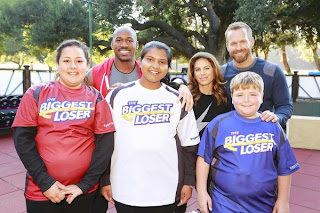Hi guys! I want to start a new installment of articles focusing on everything you need to know about various supplements. There are so many different supplements and varying information about each and every one of them so I thought this would be very helpful.
So, to kick off my Spotlight on Supplements series, I would like to start with one of the most widely used supplements: protein powder! Protein powder, in my opinion, is the number one supplement to have in your pantry. It's extremely versatile, safe, effective and almost everyone can benefit from it. Whether you're a serious gym rat, a vegan/vegetarian, or simply trying to increase your protein intake, you gotta' love this stuff!
To start, what is protein powder? Well, it depends on the type of protein your powder is derived from (we'll get to that), but basically it's just an isolated, powdered form of a specific type of protein (or a blend of different types), that is made to be water soluble(ish) so that it can be mixed into a liquid. However, there are different brands of protein powder that include a handful of other supplemental additives - so read your labels! The various sources of protein these supplements can be derived from are as follows:
Whey
Whey is is the liquid remaining after milk has been curdled and strained, and in the case of a protein powder, dehydrated. This is the most common type of protein that protein powders are made from. That's because whey contains high levels of all nine of the
essential amino acids (making it a complete protein) and branched-chain amino acids (these can be a whole other supplement in an of themselves, more later). More specifically, whey contains the highest amount of the amino acid cysteine, which is used to form glutathione; a tripeptide that plays a crucial role in the synthesis of protein, or new muscle. Whey is also very water soluble, making for a smoother texture when mixed, and is neutral tasting. There are 3 different types of whey protein...
-
Concentrate: contains between 25 - 89% protein, and contains a little more fat
-
Isolate: more purified and contains 90+% protein, almost fat-free, and easier to digest
-
Hydrolysate: rarely seen in protein powder due to taste, easy to digest, and is often found in baby formula
Because whey is derived from milk, people who are lactose intolerant or are allergic/sensitive to milk may not want to use a whey-based protein.
Casein
Casein is the most abundant protein found in milk. When digested, it forms into a lump or clot in the stomach. This is good, because as this clot/lump of casein travels through the digestive track, it is able to supply a stable and slow-release of amino acids into the blood stream. It is also pretty water soluble. Casein additionally contains higher amounts of glutamine (again, we'll save this discussion for another day), and
casomorphin. As with whey, if you have an allergy, intolerance or sensitivity to milk, this type of protein powder is not for you.
Soy
This protein is derived from, you guessed it, soybeans. The protein comes from soybean meal that has been dehulled and defatted. From there they are processed into three kinds of high protein commercial products: soy flour, concentrates, and isolates. The pros of soy protein is that soy contains many other nutritional benefits aside from a high quality protein, it's easily digestible and dairy free. However, soy protein also contains isoflavones, a type of phytoestrogen that has been linked to breast and prostate cancer. Also, isoflavones can interfere with the iodine, which plays a pivotal role in thyroid function, and can be allergenic. If you have a history of breast cancer, prostate cancer, or hypothyroidism, you may want to shy away from soy based protein powders.
Egg White
Just as it sounds, egg white protein is simply pasteurized and powdered egg white. There are numerous benefits to an choosing egg white based protein powder. Egg white protein is a top quality protein (it's a complete protein), since it comes from an animal source. It is also easy to digest and highly bioavailable, fat free and contains potassium, which can help metabolize carbohydrates and aids in the development and growth of muscles. Vegan? Move along.
Plant-Based Protein Powders (Hemp seed, sprouted rice, pea)
This is typically the best choice for people who have sensitivities to milk, vegan, and cautious of soy. Although these various plant-based protein powders tend to be less palatable (they are not as water soluble, making them a little, or a lot, chalky in texture), they do contain many benefits. Hemp seed protein contains a complete and highly-digestible protein and the oil that goes along with it is high in the good essential fatty acids. Sprouted rice protein is made from the whole grain and is a complete protein source, highly digestible and allergen free. However, it's low in the amino acid lysine, so is often combined
with pea protein powder. Pea protein is again, hypoallergenic, and is very similar to soy protein, minus the phytoestrogens.
Whew! That was a lot, I know, but that just goes to prove how complicated the world of supplements can be. My protein of choice is
Vega protein powder. It's a plant based protein, since I have a lot of allergies and sensitivities, and is pretty comparable to a whey or soy powder when it comes to texture and taste. Aside from just mixing it with some almond milk or water after hitting the gym, I also love to cook and bake with it. I add it to cookie batter, oatmeal, smoothies, all sorts of stuff!
What type of protein do you use, and what's your favorite way to use it?



























